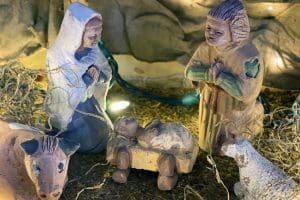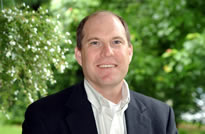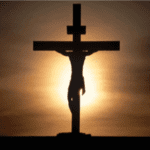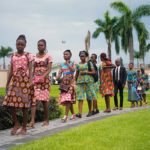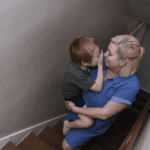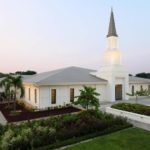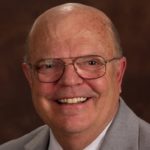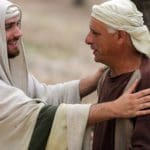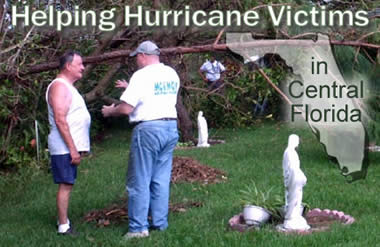
The man came to greet us in his robe. There were eight of us from the Flagler ward in Miami, Florida at his door. We had traveled 140 miles north of Miami to the small coastal community of Stuart, Florida, which had been devastated by two hurricanes in three weeks. We were wearing white shirts that said “LDS Emergency Services” on the front and “MORMON helping hands” on the back.
The man still had plywood up on his windows. A few dozen shingles had been stripped from his roof, and it leaked every time it rained.
“Hello, brothers,” he called, after we explained we were there to help him repair his roof. Ah, we thought, another Latter-day Saint. He seemed excited to see us. But then he said something puzzling: “would you like some coffee?”
We said no, and then the man was called inside. He came out sheepishly a few moments later. “We are Witnesses, you know, Jehovah’s Witnesses. My wife doesn’t want you to work on our roof. I thought you were from our church but you’re Mormons.”
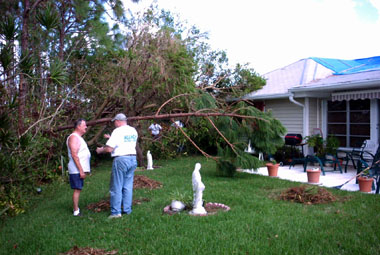
“Well, we’re here, and we won’t charge you anything,” we said.
“Well, if you want to do the work, that’s fine, I guess,” he said. “But you should know we are Witnesses.” He seemed to want to make it clear their religious affiliation would not change.
And up we climbed on his roof. We replaced the broken shingles with new ones and cleaned up broken-down trees from the back yard. The man was very grateful, as were the neighbors. Two hours later, we were off to our next house.
Thousands of Church members have spent nearly every weekend since August this way in Florida. The state has suffered through an unprecedented four hurricanes in two months. First came Charley, which hit the West Coast of Florida, then Frances, which struck Stuart and the eastern area called the Treasure Coast, then Ivan, which smashed the Panhandle area of northern Florida and Alabama and then Jeanne, which came ashore once again in the Treasure Coast.
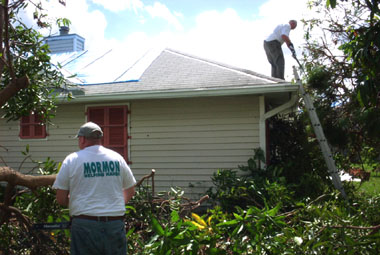
Some areas of central Florida have been hit by three hurricanes because Charley,
Frances and Jeanne all crossed nearby. Hundreds of thousands of people have lost power and phone service, in some cases for weeks on end. School was canceled for a month in some communities.
Imagine what living for a month in a home with a damaged roof – without power, in 90-degree heat, with no school for the kids – can do to home life. Therapists report a tremendous amount of tension in many homes. Many people suffer the effects of a hurricane the rest of their lives.
Down in Miami, we know this. One of the worst hurricanes in history – Andrew — hit us in 1992, turning the southern part of Miami into a war zone. So far in 2004, however, we have been lucky, and none of the hurricanes has made a direct hit.
None of the hurricanes this year has been as powerful as Andrew either. But the damage in central Florida and up in the Panhandle has been substantial. We drove through a mobile home park where hundreds of home had damaged roofs and porches. Many of them were now unlivable.
The Stuart, Florida stake was ground zero for Hurricanes Frances and Jeanne. The disasters have tested the ability of Church emergency services to respond. The good news is that the response has been impressive. The stake center was turned into a storage facility. The gym was filled with palettes of water, food and roofing materials. Boxes of chain saws and gas-power generators fill the classrooms where Sunday school usually meets.
On Oct. 2, more than 100 people from other areas drove their own pickups, SUVs and vans to Stuart. Many brought their own equipment (all experienced Florida residents own their own chain saws and battery-powered tools). We are all super handymen (and women) – accountants, teachers, salespeople and mothers and fathers by day and “Tooltime” aficionados by night and on Saturdays. We are ready for the next handcart expedition across the continent – bring it on!
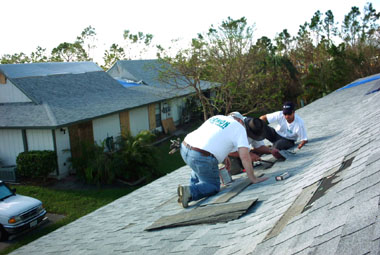
In Stuart, our challenge was a bit more modest than that. We traveled to a retirement community of about 100 homes. Each of them had severe roof damage, and almost all were covered with blue tarps to protect from the rain that falls almost daily in Florida this time of year.
We drove to the home of Robert Schmidt, a retiree from Michigan who lives there with his wife. Several large trees were knocked over by the wind into the back of the Schmidt’s house. We had some lunch and went right to work. It was hot and sweaty work – 90 degrees and 90 percent humidity. Our clothes were already soaked through with sweat from the roof work, but we added an extra sheen of wetness with the yard work on Mr. Schmidt’s house.
Osvaldo Pereyra, a church member from the Flagler ward, was the captain of the chainsaw. “I have a new toy,” he said happily as he cut away at the massive trees. He ended up the day covered in saw dust. We hauled tree branches for what seemed like hours. And then we raked up more than dozen garbage bags full of leaves.
Mr. Schmidt came out of the house every half-hour to offer us iced tea. He didn’t seem to understand why we kept on turning him down. But we did finally accept some lemonade and cookies.
“I sure do appreciate the help,” Mr. Schmidt said. “It would have taken me weeks to get this done by myself.”
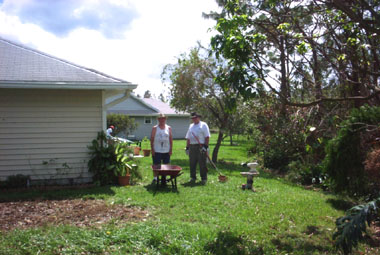
Mr. Schmidt was so enthusiastic about our assistance that he told another neighbor about the roving band of helpful Mormons. She also had a tree fall in her backyard, so after we bid the Schmidts goodbye it was off to her house. It took us a half-hour to saw and haul the old pine tree in her back yard, and we headed back to the stake center for more work orders.
The good news was that so many Church members responded to the requests to help that there were no more work orders left. We had expected to be asked to work on Sunday Oct. 3, but so much work got done on Saturday, that most of the Sunday crews were dismissed and allowed to go home and watch General Conference with their families. So, aching and sore, we headed home for a true day of rest.
—–
Geoffrey Biddulph is the author of a new novel called “Island of the Innocent,” an adventure story that describes one man’s conversion to the fullness of the gospel. More information can be found here.








